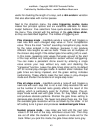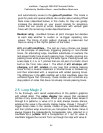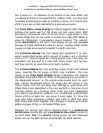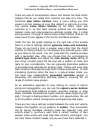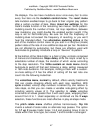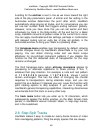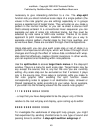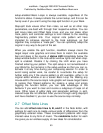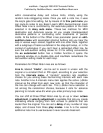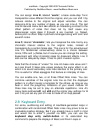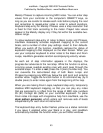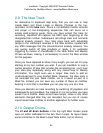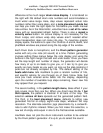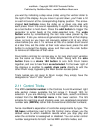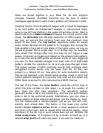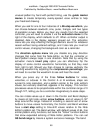maxWerk - Copyright 2000-2007 Amanda Pehlke
Published by RedMoon Music - www.RedMoon-Music.com
51
within
conservative
delay and octave limits, initially using the
random
note
retriggering
mode.
Once you add a note line, it uses
the loop's gate time setting, but by
means
of its thru part menu you
can
route
its notes to any Basic
Loop's
MIDI
device/channel.
Each
Offset Note Line is
controlled
by the
automute
pattern
of the track
selected in its
obey
auto
menu.
These
two
matrices
for MIDI
destination
and
Automute
source
let you
create
interdependent
decorative
patterns
or
contrasting
sonic
treatments
of parallel
motifs. At the
bottom
of the Offset Lines
parameter
panel an
edit-
audition
menu with
associated
shortcut
buttons
lets you
hear
the
loop in various ways: soloed,
together
with one
other
track,
together
with a
subgroup
of tracks as
defined
in the
step-split
setup, or in the
context of
automutes.
If you can't
hear
a red
irected
offset line, be
sure the
edit-audition
setting allows for it!
For
editing
convenience
the as
automuted
button
has a
hidden
function--it
opens the
automute
window on a
double-click--and
maxWerk
remembers
the
last
audition
setting
made
for each loop.
Parameters
for Offset Note Lines are as follows:
Line
A, labeled “triadic”, can be set to sound in unison with the
original or a
constant
third or fifth
apart,
according
to your selection
from
the
intervals
menu. A
“random”
selection lets maxWerk
choose for you
among
these
harmonizing
intervals with each new
note.
Another
Line A intervals
menu
item applies the active (+)Note
interval as the offset
from
each new note, so that the
character
of
the line can
change
with each bar. This
(+)Note
menu
selection is
not
among
the
randomizer
choices,
because
it calls for
advance
planning
to include value 8's when you
enter
primary
loop notes.
You can shift all
three
Offset Note Lines by an up or down
octave
adjustment
. A
velocity
adjustment
is available that lets you
create
interesting
effects
ranging
from
faint echoes to
patterns
that are
louder
than the
original.
You can set a
delay
of any
number
of loop
steps, and choose
from
three
play
modes. Line A is the easiest
additional
note line to use
because
it
never
sounds
dissonant.



